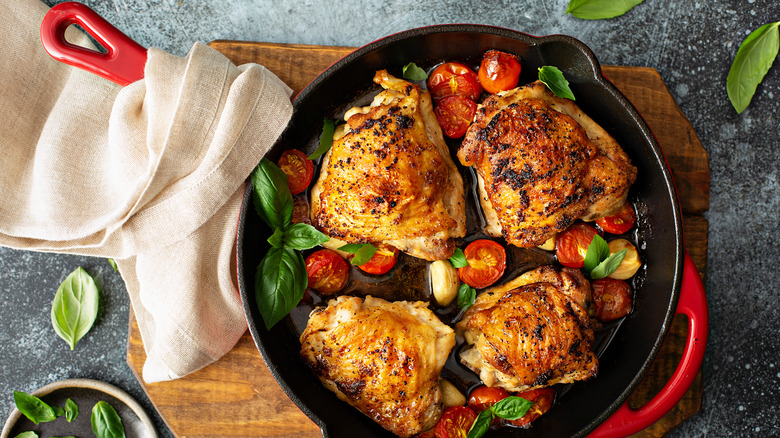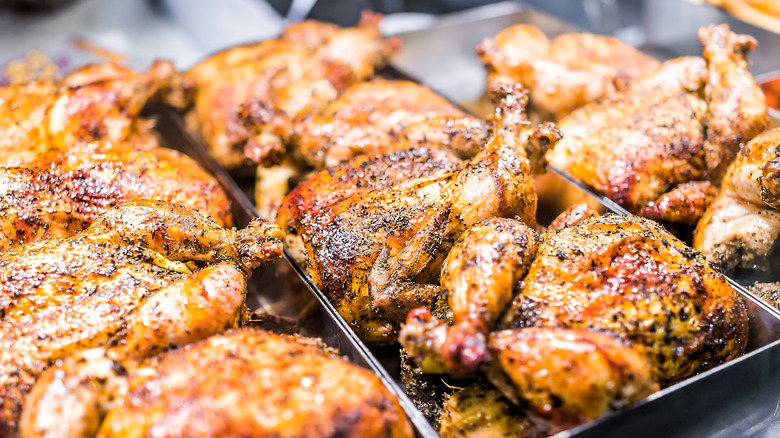Why A Hot Pan Is Crucial For Cooking Chicken
Without chicken, the world would likely spin into a frenzy, with chefs wondering how you could even make dishes like chicken piccata and crunchy fried chicken. Fortunately, such a nightmare has yet to unfold, and for now, we can all happily bask in the nostalgic flavors and versatility of the humble bird.
Speaking of versatility, Koch Foods notes that chicken adapts well to a variety of spices, marinades, and breadings, which makes it an excellent choice for restaurant menus. They go on to explain that you can also find this protein in a variety of hot and cold meals, ranging from spicy sandwiches to apple pecan chicken salads. (Fun fact: During the late 19th century, chicken salad was consumed by the rich because chicken was four times more expensive than sirloin steak, per First We Feast).
The versatility of this meat also extends to its cooking methods, as the bird can be deep-fried, roasted, grilled, pan-fried, and, well, you get the picture. Pan-frying is an especially popular way of cooking chicken because of the textural contrast of the crispy exterior versus the tender meat inside. Of course, that is if you use a hot pan.
Caramelization needs high heat
We're not making crispy duck here, so ditch the cold pan in favor of a piping hot one. As Food & Wine notes, high heat is important to get the outside of the chicken caramelized and seared to perfection.
Now, if you might be wondering, "What is caramelization?" Science of Cooking is happy you asked. Two major things happen when food becomes caramelized: The water inside becomes nice and steamy, and the sugars, like sucrose and glucose, start to disintegrate further. This browning reaction makes such foods taste nutty and gives them a golden-brown hue, which becomes ever so pleasing for our eyes and stomach.
If the caramelization process isn't a good enough reason to use a hot pan, maybe this one by Eat North is: Adding chicken to a cold pan with cold oil will soak it up like a sponge and taste very unpleasant. And speaking of oil, it's important to opt for one with a high smoke point, as the Food & Wine source suggests. Some solid options would be peanut oil, safflower oil, and refined avocado oil, as these all have smoke points at or above 450 degrees Fahrenheit, per MasterClass. On that note, steer clear of extra virgin olive oil, butter, and unrefined coconut oil, as these may be more prone to burning when cooking chicken at high temperatures.

